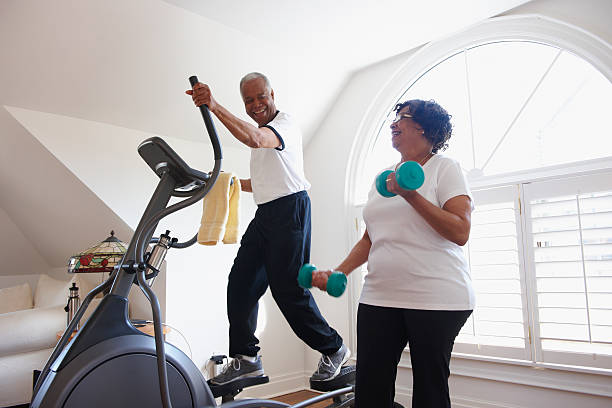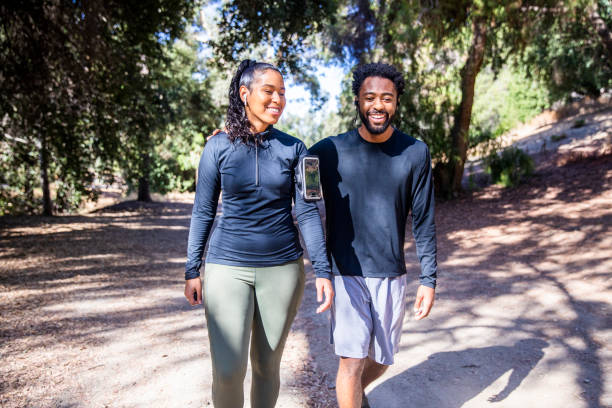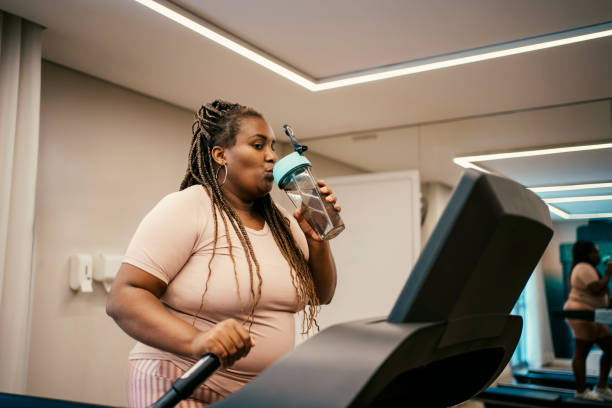(BlackFitness101.com) Building muscle at any age can be a rewarding endeavor, but as we age, our bodies undergo changes that make this process both more challenging and more critical. For those over 50, maintaining and building muscle mass is not just about aesthetics—it’s about enhancing quality of life, improving overall health, and ensuring functional independence. As a fitness trainer, I’ve seen firsthand the transformative effects of muscle-building in older adults. This guide will delve into the physiological changes that occur with aging and provide detailed strategies to effectively build muscle after 50.
The Aging Process and Muscle Mass
Sarcopenia: The Age-Related Loss of Muscle
One of the most significant changes that occur with aging is sarcopenia, the gradual loss of muscle mass and strength. Sarcopenia can begin as early as the fourth decade of life and accelerates after the age of 50. Factors contributing to sarcopenia include hormonal changes, decreased physical activity, and inadequate nutrition.
Key points about sarcopenia:
- Hormonal Changes: Testosterone and growth hormone levels decline with age, impacting muscle growth and repair.
- Physical Activity: Reduced physical activity leads to muscle atrophy and a decrease in muscle protein synthesis.
- Nutrition: Older adults often consume fewer calories and protein, which are essential for maintaining muscle mass.
Metabolic Slowdown
As we age, our basal metabolic rate (BMR) decreases. This means the number of calories our bodies need to perform basic functions drops, making it easier to gain fat and harder to build muscle. Coupled with sarcopenia, this metabolic slowdown can significantly impact overall body composition.
The Importance of Muscle Building After 50
Building muscle after 50 is crucial for several reasons:
- Improved Metabolic Health: Muscle tissue burns more calories at rest than fat tissue, aiding in weight management and reducing the risk of metabolic disorders.
- Enhanced Mobility and Independence: Strong muscles support joints, improve balance, and reduce the risk of falls and fractures.
- Better Mental Health: Regular strength training can improve mood, cognitive function, and overall well-being.
- Chronic Disease Prevention: Muscle mass is linked to a lower risk of chronic conditions such as type 2 diabetes, cardiovascular disease, and osteoporosis.
Strategies for Building Muscle After 50
Resistance Training: The Foundation
Resistance training is the cornerstone of muscle building at any age. For those over 50, it is particularly important to focus on a balanced program that includes exercises targeting all major muscle groups.
Key components of an effective resistance training program:
- Progressive Overload: Gradually increase the weight, repetitions, or intensity of exercises to continuously challenge muscles and stimulate growth.
- Compound Movements: Focus on exercises that work multiple muscle groups simultaneously, such as squats, deadlifts, bench presses, and rows.
- Proper Form and Technique: Prioritize form to prevent injuries and maximize the effectiveness of each exercise. Consider working with a fitness trainer to ensure proper technique.
- Rest and Recovery: Allow adequate recovery time between workouts to enable muscle repair and growth. Aim for 48 hours of rest between training sessions for the same muscle group.
Sample Resistance Training Routine:
- Day 1: Upper Body
- Bench Press: 3 sets of 8-12 reps
- Bent Over Rows: 3 sets of 8-12 reps
- Overhead Press: 3 sets of 8-12 reps
- Bicep Curls: 3 sets of 10-15 reps
- Tricep Dips: 3 sets of 10-15 reps
- Day 2: Lower Body
- Squats: 3 sets of 8-12 reps
- Deadlifts: 3 sets of 8-12 reps
- Leg Press: 3 sets of 10-15 reps
- Calf Raises: 3 sets of 15-20 reps
- Hamstring Curls: 3 sets of 10-15 reps
- Day 3: Full Body and Core
- Pull-Ups: 3 sets of 8-12 reps
- Lunges: 3 sets of 10-15 reps per leg
- Planks: 3 sets of 30-60 seconds
- Russian Twists: 3 sets of 15-20 reps per side
- Medicine Ball Slams: 3 sets of 10-15 reps
Cardiovascular Exercise
Cardiovascular exercise is important for overall health and complements resistance training by improving cardiovascular fitness and aiding in recovery.
Key points about cardiovascular exercise:
- Moderation: Focus on moderate-intensity cardio, such as brisk walking, cycling, or swimming, to avoid excessive strain on joints.
- Frequency: Aim for at least 150 minutes of moderate-intensity cardio per week, spread across several days.
- Variety: Incorporate different forms of cardio to keep workouts interesting and engage different muscle groups.
Flexibility and Mobility
Flexibility and mobility exercises are essential for maintaining joint health and preventing injuries. As we age, joints can become stiffer and less flexible, impacting overall movement and exercise performance.
Key components of flexibility and mobility training:
- Dynamic Stretching: Perform dynamic stretches, such as leg swings and arm circles, before workouts to prepare muscles and joints.
- Static Stretching: Incorporate static stretches, such as hamstring stretches and shoulder stretches, after workouts to improve flexibility.
- Yoga and Pilates: Consider incorporating yoga or Pilates into your routine to enhance flexibility, balance, and core strength.
Nutrition: Fueling Muscle Growth
Proper nutrition is critical for building muscle, especially after 50. Older adults often need to pay extra attention to their diet to ensure they are getting the necessary nutrients for muscle growth and recovery.
Key nutritional strategies:
- Protein Intake: Adequate protein is essential for muscle repair and growth. Aim for at least 1.2 to 1.6 grams of protein per kilogram of body weight per day. Include high-quality protein sources such as lean meats, fish, eggs, dairy, legumes, and plant-based proteins.
- Balanced Diet: Ensure a balanced diet that includes a variety of fruits, vegetables, whole grains, and healthy fats to provide the necessary vitamins and minerals for overall health.
- Hydration: Stay well-hydrated to support muscle function and recovery. Aim for at least 8-10 glasses of water per day.
- Timing: Consider spreading protein intake throughout the day, with protein-rich meals and snacks every 3-4 hours, to optimize muscle protein synthesis.
Sample Meal Plan:
- Breakfast: Greek yogurt with mixed berries and a sprinkle of nuts
- Mid-Morning Snack: A protein smoothie with spinach, banana, and protein powder
- Lunch: Grilled chicken breast with quinoa and a side of steamed vegetables
- Afternoon Snack: Apple slices with almond butter
- Dinner: Baked salmon with sweet potatoes and a side salad
- Evening Snack: Cottage cheese with a drizzle of honey and a few slices of cucumber
Supplementation
While a well-balanced diet is the foundation of good nutrition, supplements can sometimes be beneficial, especially for older adults who may have difficulty getting enough nutrients from food alone.
Common supplements for muscle building after 50:
- Protein Powder: To help meet daily protein needs, especially if dietary intake is insufficient.
- Creatine: Can enhance muscle strength and growth when combined with resistance training.
- Vitamin D: Important for bone health and muscle function; many older adults are deficient.
- Omega-3 Fatty Acids: Help reduce inflammation and support overall health.
- BCAAs (Branched-Chain Amino Acids): May aid in muscle recovery and reduce muscle soreness.
Overcoming Challenges
Building muscle after 50 comes with unique challenges, but with the right approach, these can be effectively managed.
Common Challenges and Solutions:
- Joint Pain and Arthritis: Modify exercises to reduce joint strain. Use low-impact activities and ensure proper warm-up and cool-down routines.
- Injuries: Focus on proper form and technique. Start with lighter weights and gradually progress to avoid overloading muscles and joints.
- Motivation: Set realistic goals and track progress. Consider working out with a partner or hiring a fitness trainer for accountability and support.
- Time Constraints: Schedule workouts into your daily routine. Shorter, more frequent sessions can be as effective as longer workouts.
Mindset and Consistency
Success in building muscle after 50 requires a positive mindset and consistency. Understand that progress may be slower than in younger years, but persistence will pay off.
Tips for maintaining a positive mindset:
- Set Realistic Goals: Focus on achievable, short-term goals that build towards your long-term objectives.
- Celebrate Small Wins: Acknowledge and celebrate progress, no matter how small. This can boost motivation and confidence.
- Stay Educated: Keep learning about fitness and nutrition. Knowledge empowers you to make informed decisions about your health.
Building muscle after 50 is not only possible but highly beneficial for overall health and well-being. By understanding the changes that come with aging and implementing a comprehensive fitness and nutrition plan, you can achieve significant muscle growth and improve your quality of life. Remember to prioritize resistance training, incorporate cardiovascular and flexibility exercises, focus on proper nutrition, and maintain a positive mindset. With consistency and dedication, you can build the strength and vitality needed to enjoy life to the fullest at any age.
Staff Writer; Leroy Smith
Questions? Feel free to email me at; LSmith@BlackFitness101.com.













Leave a Reply